As those of you who have been following Detector’s Digest, in one of my first posts, I did a blog on bit bosses. I’ll include a photo of them, but if you haven’t seen that blog, go here. I won’t repeat that information now.
For today, I thought I would do a blog on a few other horse-related items. First up are a few spurs that I’ve found. On the top left is a spur found in a known Civil War troop movement area—mostly Confederate, though Union troops may also have gone through this area. I can’t be sure that this is a Confederate cavalry spur, but I’d like to think so. It’s difficult to see in this photo, but this spur has a definite gold patina to it, and I’m sure it’s brass.
Second from the top, on the left is a tiny little spur fragment. It had to be a child’s spur, presumably a dress-up set, rather than an actual using spur because it probably fit a 1-2 year-old child.
On the bottom, left is another brass spur that is fairly ornate (see close up below). A little internet research turned up an exact match that was dug near Gettysburg in 1975. It was labeled as an officer’s spur, but the listing didn’t designate whether it was Union or Confederate.
On the right in the grouping photo is a toy spur made of pot metal. It’s probably from the 1940’s or 1950’s, and was made before aluminum became cheap and easily accessible. Pot metal is primarily zinc, but the metalsmith would often add copper, tin, lead, or other metal to strengthen the end product.
Next is a Mullen mouth bit, which is in fantastic shape for its age. Mullen mouth bits are among the gentlest of bits, and have been in use for nearly three thousand years, since the time of Xenophon around 900 BCE. This particular one is very likely from also from the Civil War era, and similar bits can be found on the internet with positive identification from battlefield sites
The next bit is only about 50% intact and is a jointed, or snaffle bit. Snaffle bits are often used as “breaking” bits for teaching a horse to accept the bit and rein control and are also fairly gentle bits*. This model had short shanks, which increased the leverage on the horse’s mouth, and would have been an intermediate bit between a ring snaffle and a curb bit.
The next group of tack here are three assorted rein’s guides or terrets from driving harnesses. The “saddle” of the harness is the narrow strap part that sits atop the horse’s back just behind the withers and attaches to the girth that goes around the horse’s belly. The rein’s guides sat atop the saddle at about 10 o’clock and 2 o’clock, when viewed from the driving seat. They kept the reins in a proper position for contact with the horse’s mouth while driving and kept them from drooping and tangling with other parts of the harness, especially the buggy shafts, which would have been catastrophic.

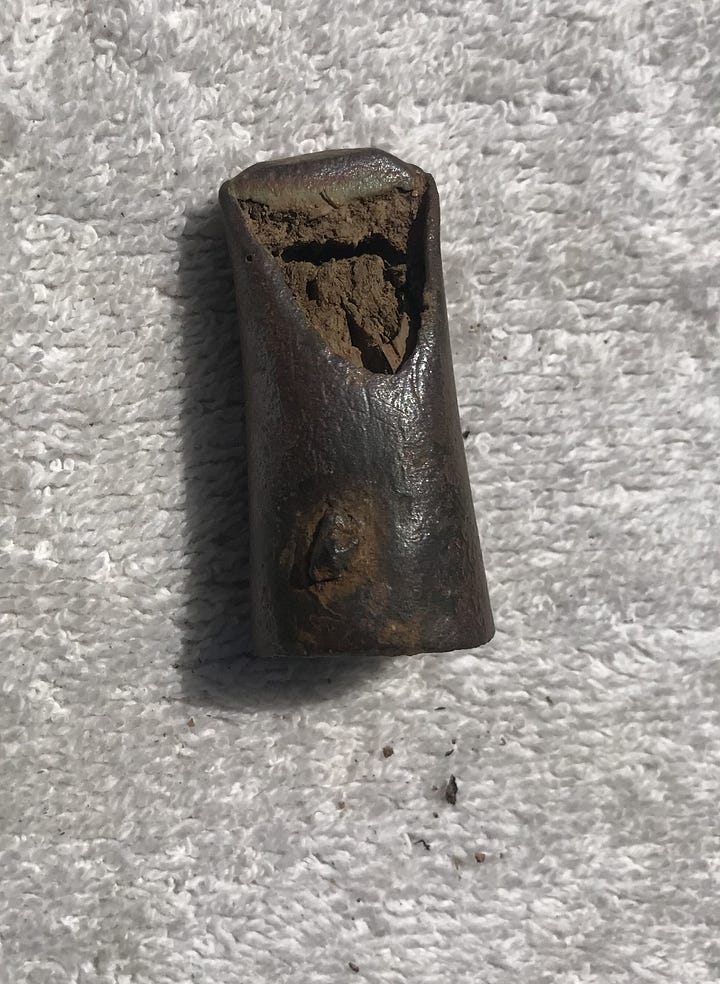
Shaft tips were applied to the ends of the buggy shafts to prevent the wood from coming in direct contact with wet ground and from wearing out from constant contact with hard ground. This one still has a bit of wood inside, indicating that it broke off rather than fell off, and has a badly worn spot where it rested on the ground, indicating a well-used buggy.
In my metal detecting career, I’ve dug over a hundred buckles of various types. Sometimes it’s hard to differentiate between those used for tack, and those used for other purposes. Here’s a photo of four buckles that may be horse related. One of these still has some very old leather attached. I’ll probably do a blog on all my buckles in the future.
That’s it for today. Subscribe to catch future posts with more interesting Civil War and other found stuff.
*Any bit can be either gentle or harsh, depending on the hands that wield control. But a person who is qualified (ethically, at least) to use a Mullen or snaffle bit may not be able to use a curb or spade bit without harming the horse.

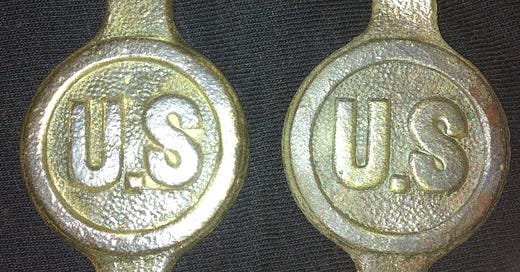



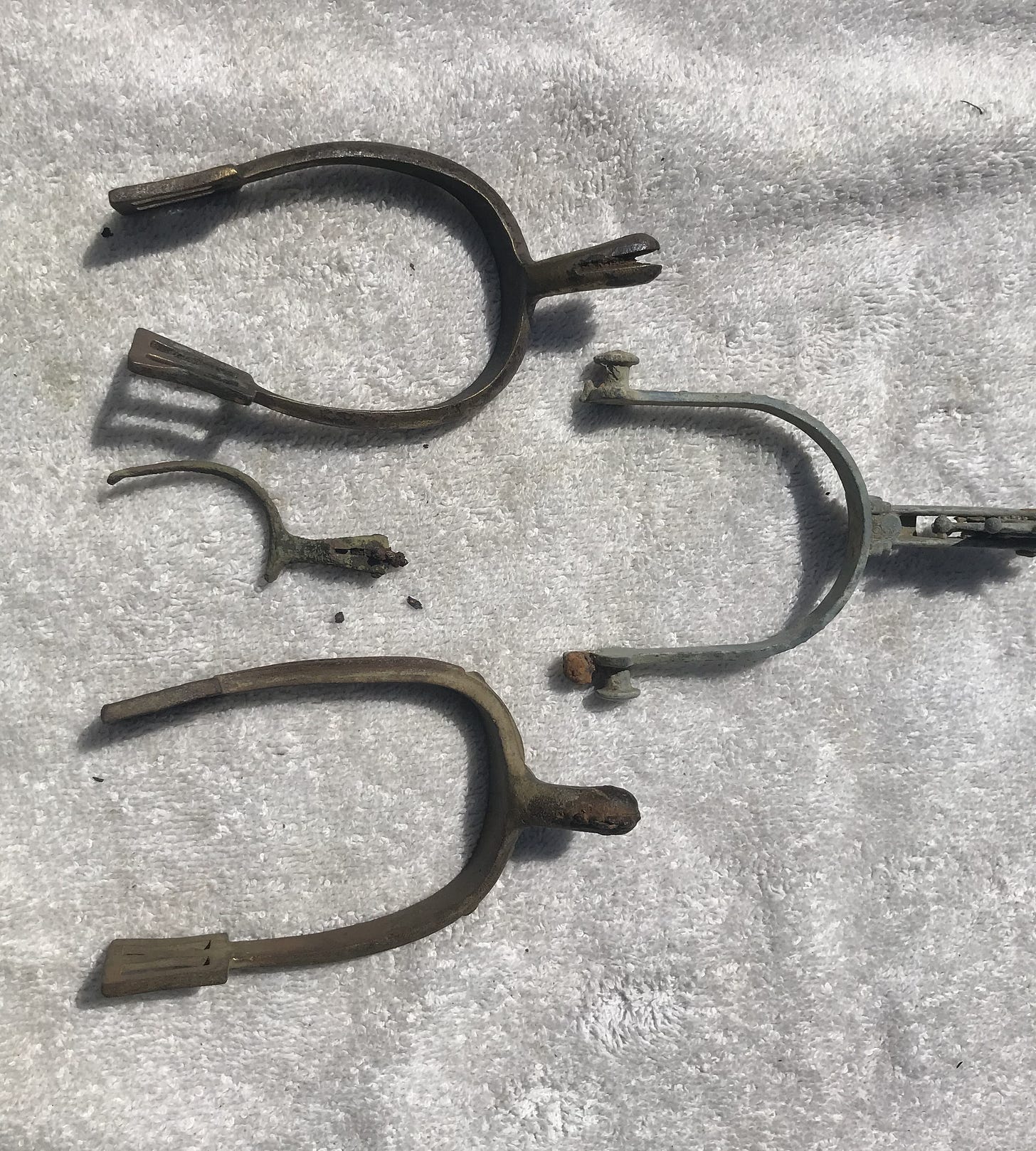
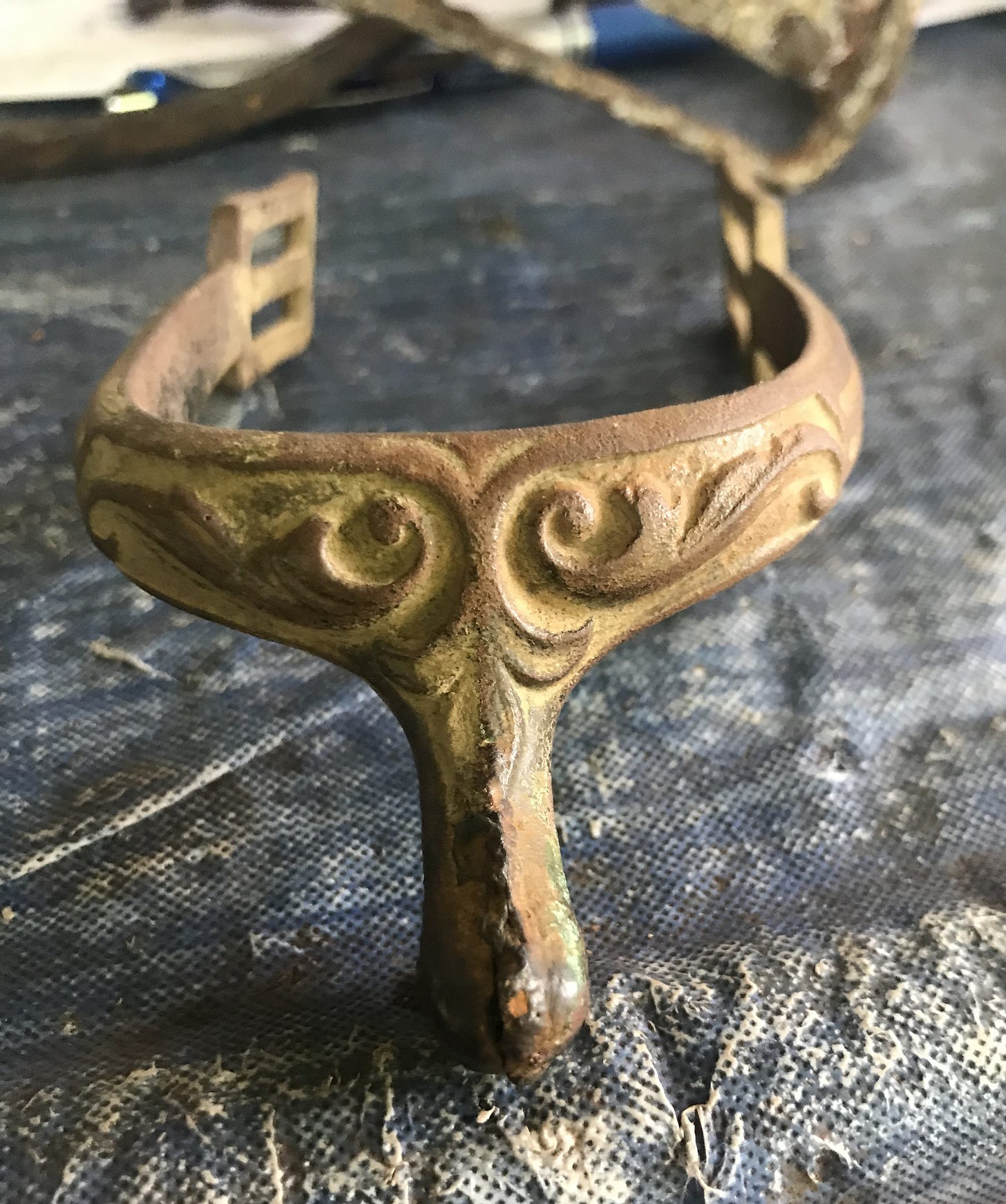
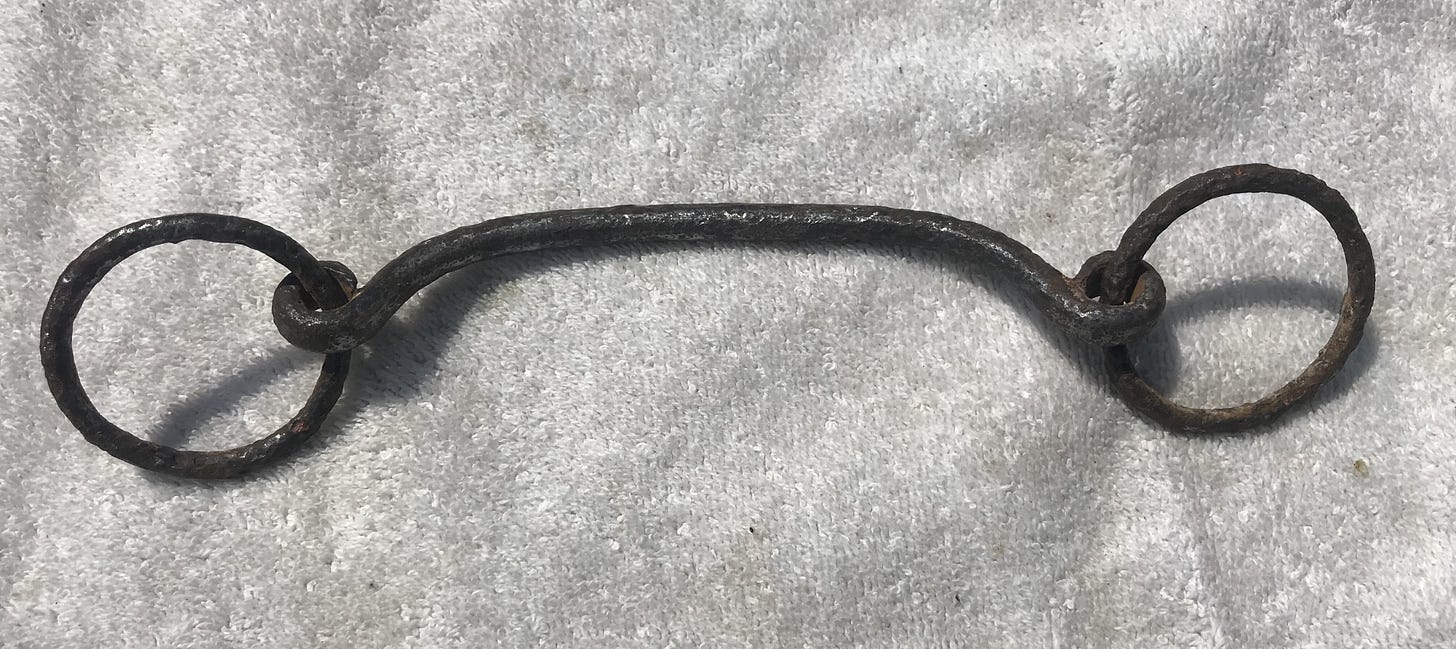
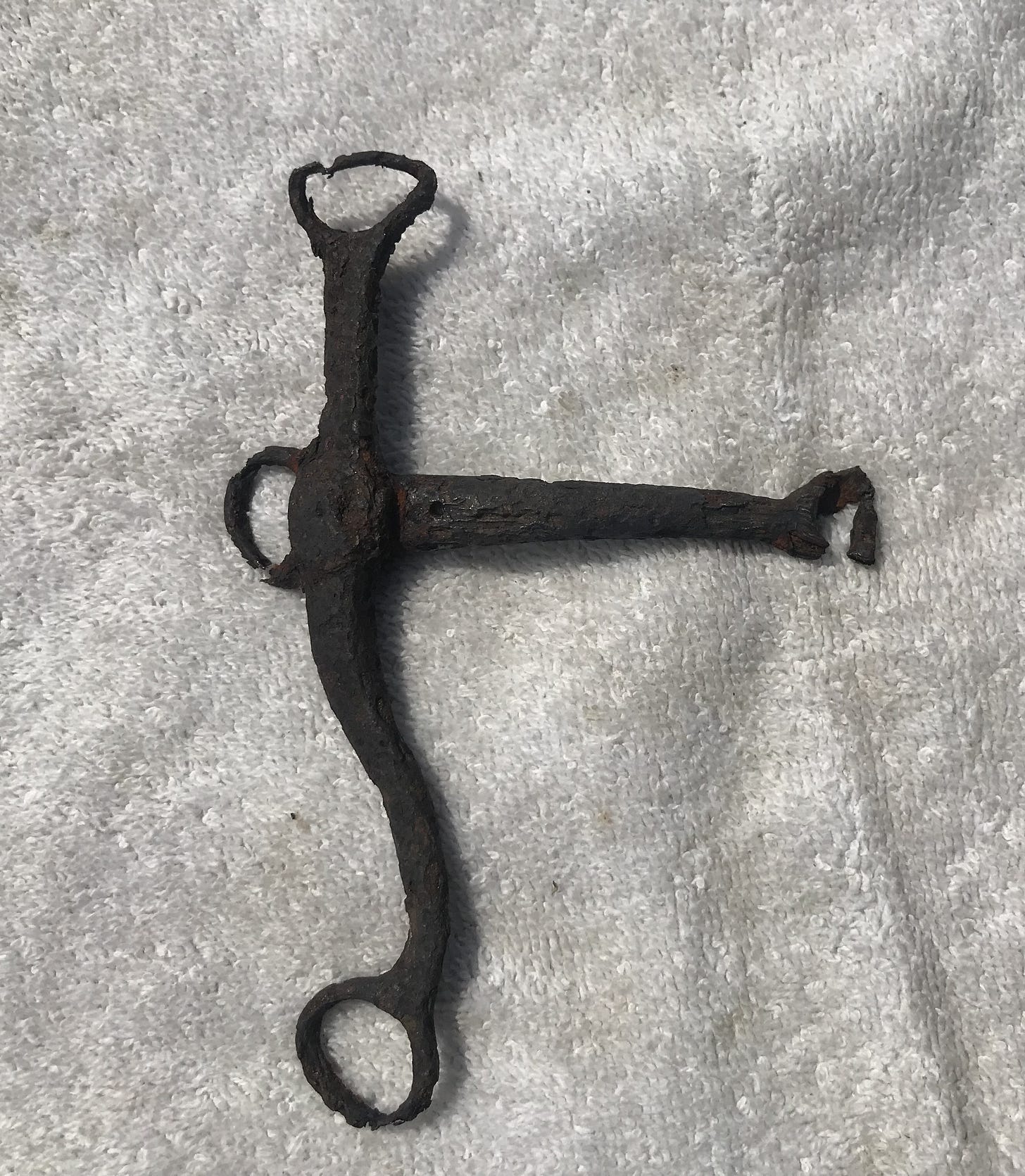
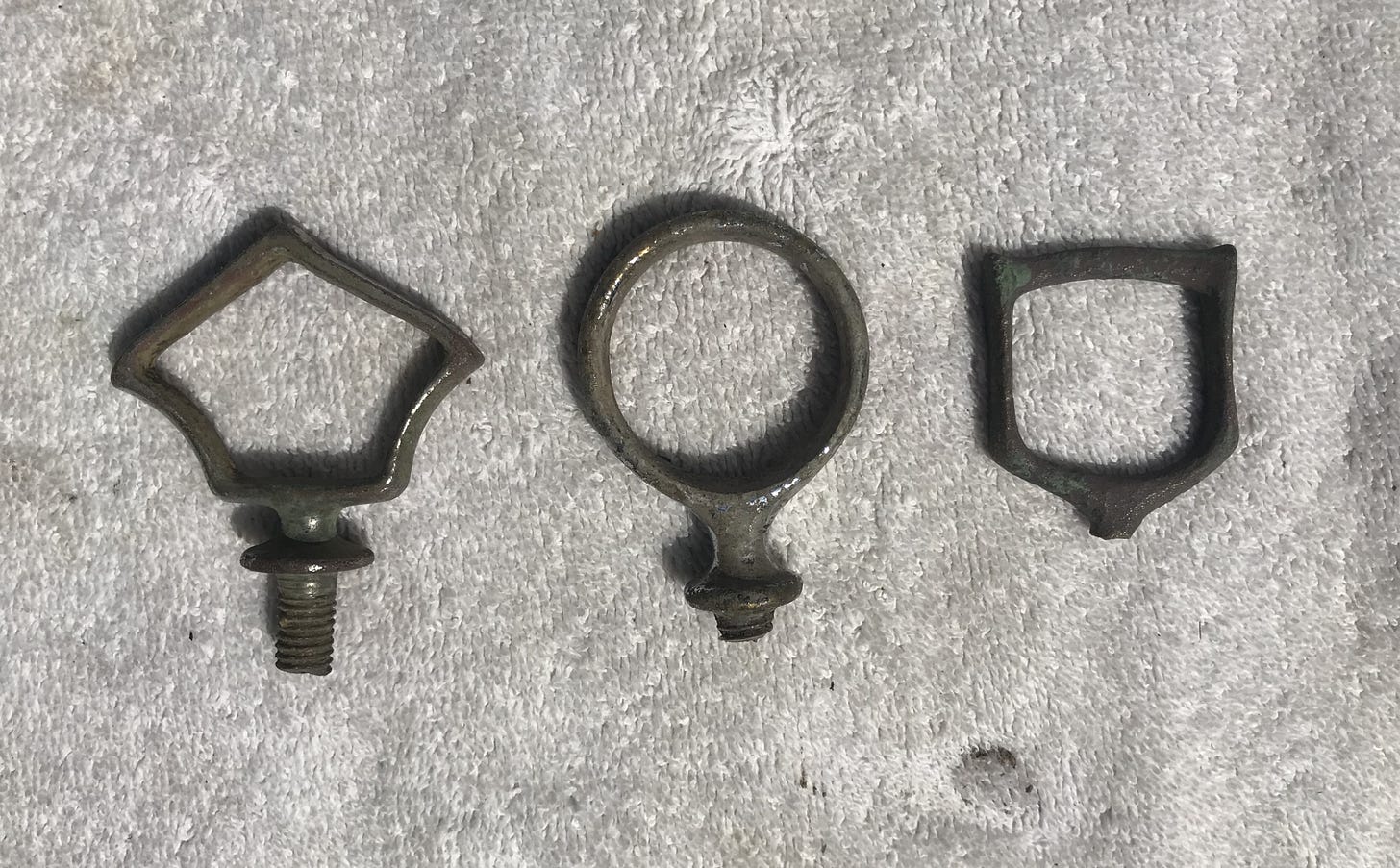
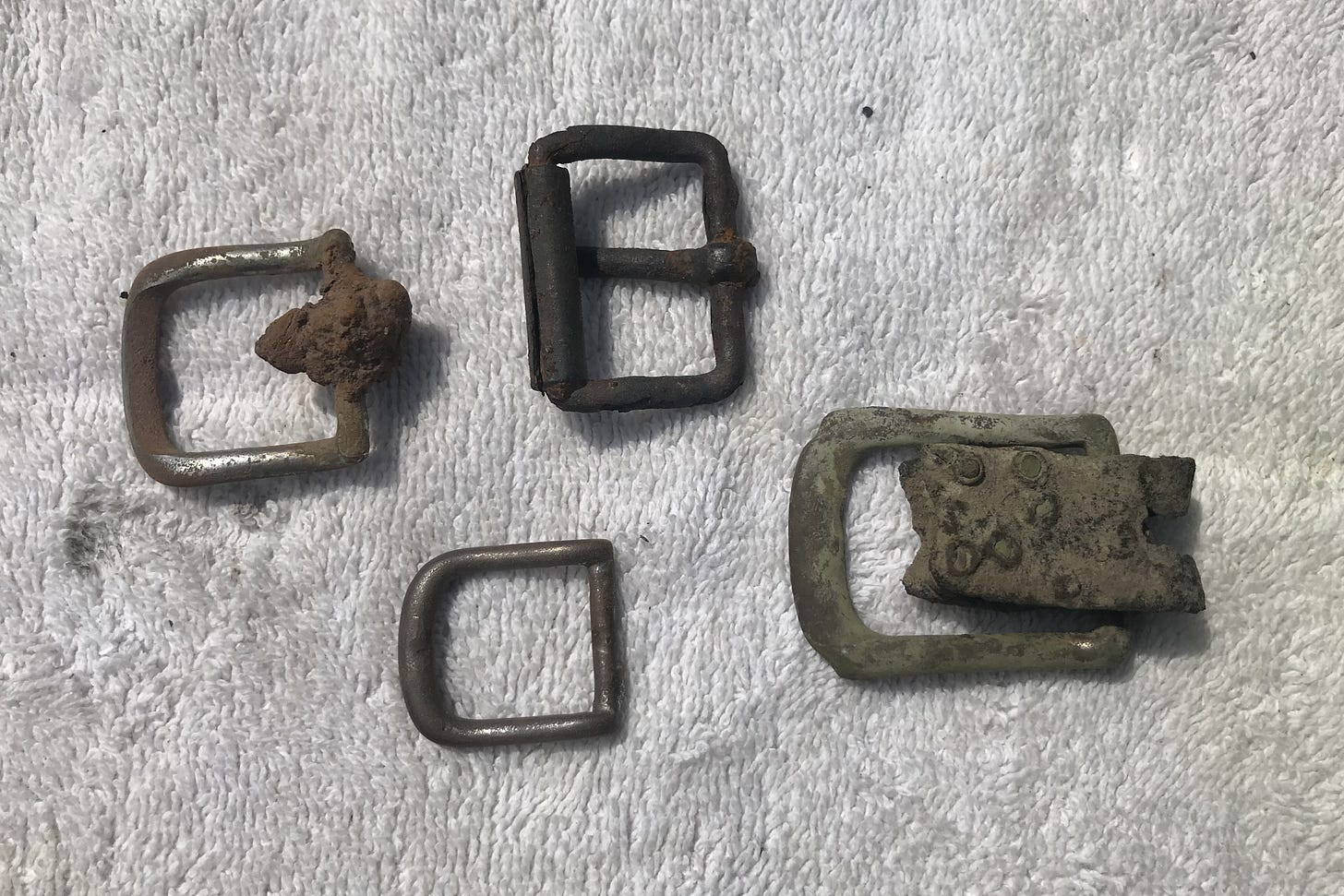
Wow! I had no idea about the history of horse tack. And what an amazing collection you've gathered! I'm imagining how cool it would be to offer a summer camp class in detecting to young teens to get them outdoors and off of their phones, sharpen their observation skills, and get them interested in local history.